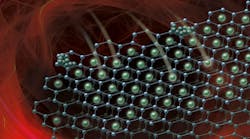While gas tanks can be filled in a matter of minutes, charging an electric car’s battery takes much longer. To level the playing field and make electric vehicles more convenient for consumers, engineers at Argonne National Laboratory are working on fast-charging alternatives.
“Fast charging is important for selling electric vehicles,” says battery scientist Daniel Abraham at DOE’s Argonne National Laboratory. “We’d like to be able to charge an electric-vehicle battery in under 15 minutes, and faster if possible. And by seeing exactly how lithium is distributed in the electrode, we’re gaining the ability to precisely determine the inhomogeneous way batteries ages.”
The principal problem with fast charging happens when lithium ions move from the positive cathode to the negative anode. If the battery is charged slowly, ions extracted from the cathode gradually slot themselves between the planes of carbon atoms that make up the graphite anode, a process known as lithium intercalation.
But when this process speeds up, lithium can end up deposited on the surface of the graphite as metal, which is called lithium plating. “When this happens, battery performance suffers dramatically, because plated lithium cannot be moved from one electrode to the other,” Abraham explains.
According to Abraham, this lithium metal chemically reduces the battery’s electrolyte, and a solid-electrolyte interphase forms that ties up lithium ions so they cannot shuttle between electrodes. As a result, the battery can store less energy over time.
To study how lithium ions move within the battery, the research team created a 2D image of the battery using x-rays to image each phase of lithiated graphite in the anode.
This view let researchers precisely quantify the amount of lithium in different regions of the anode when the battery charges and discharges. They discovered that lithium accumulates at regions closer to the battery’s separator under fast-charging conditions.
To selectively see a particular region in the battery, researchers relied on a technique called energy dispersive x-ray diffraction. Instead of varying the angle of the beam to reach particular areas of interest, researchers varied the incident light’s wavelength.
By using x-rays, Argonne’s scientists identified the crystal structures in the graphite layers. Graphite is a crystalline material, so inserting lithium expands the graphite lattice to varying degrees. This expansion of the layers is noticeable as a difference in the diffraction peaks, and the intensities of these peaks give the lithium content in the graphite.
While this research focuses on small coin-cell batteries, future studies could examine the lithiation behavior in larger pouch-cell batteries, such as those found in smartphones and electric vehicles.

